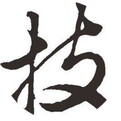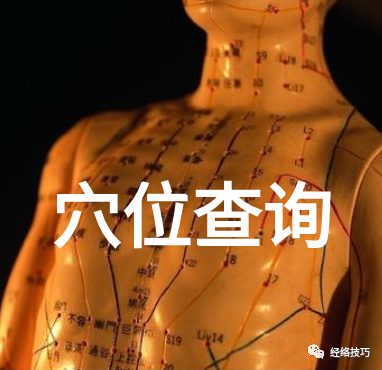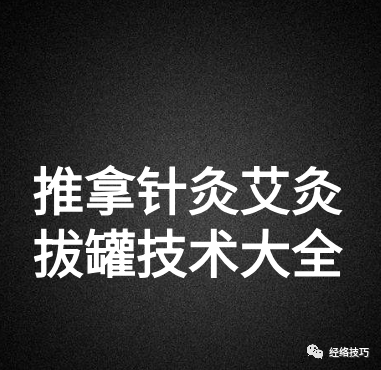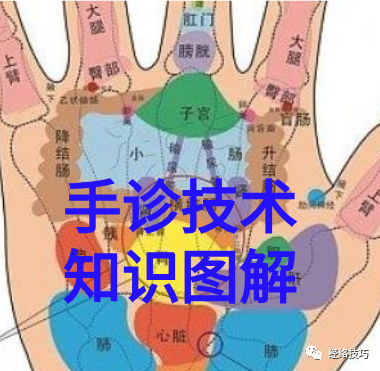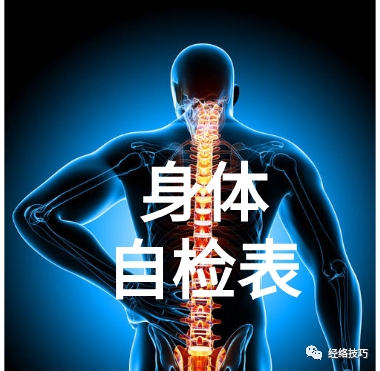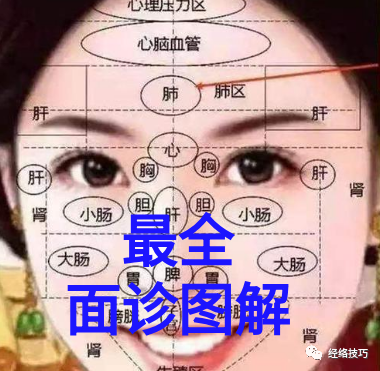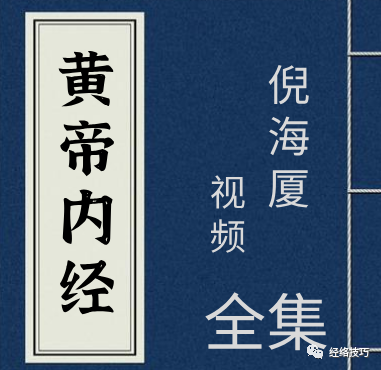
Click the image below to read ↓↓↓
|
|
|
|
|
|
|
|
|
|
—— The following is the main text ——
1. The Five Elements
1.1 Origin of the Five Elements Theory
The Five Elements theory is the essence of traditional Chinese culture, referring to the five fundamental substances: Wood (growth, flexibility, smoothness), Fire (warmth, rising, brightness), Earth (transformation, support, acceptance), Metal (cleansing, refinement, contraction), and Water (coolness, nourishment, downward movement). Ancient Chinese people recognized through long-term life and production practices that these five elements are essential and that all things in the world arise from the interactions and transformations among them. There exists a relationship of mutual generation and restriction among these elements, maintaining a dynamic balance through their continuous interactions, which is the fundamental meaning of the Five Elements theory.
1.2 The Generative and Restrictive Relationships of the Five Elements
The Five Elements theory posits that there are generative (sheng) and restrictive (ke) relationships among the elements. The generative sequence is: Wood generates Fire, Fire generates Earth, Earth generates Metal, Metal generates Water, and Water generates Wood. The restrictive sequence is: Wood restrains Earth, Earth restrains Water, Water restrains Fire, Fire restrains Metal, and Metal restrains Wood. The generative and restrictive relationships are inseparable; without generation, things cannot arise and grow; without restriction, things cannot maintain normal coordination. Only by maintaining a dynamic balance of generation and restriction can things develop normally.
2. The Five Elements and the Five Organs
Traditional Chinese Medicine (TCM) views the human body as a complex unity centered around the five organs, which, along with the six bowels, form five major systems connected by meridians. This is part of the systemic theory of TCM. Therefore, discussing TCM health preservation inevitably involves the internal connections and mutual generation among the five organs.
Wood → Fire → Earth → Metal → Water
Liver → Heart → Spleen → Lung → Kidney
For example, Wood generates Fire, meaning the Liver (Wood) supports the Heart (Fire). The Liver stores blood, and the Heart governs blood vessels; normal liver blood storage supports the heart’s function. Fire generates Earth, meaning the Heart (Fire) warms the Spleen (Earth). The Heart governs blood vessels and spirit, while the Spleen governs transformation and blood production; a normal heart function ensures blood nourishes the Spleen, allowing it to perform its functions. Earth generates Metal, meaning the Spleen (Earth) supports the Lung (Metal). The Spleen can benefit Qi, transform Qi and blood, and transport essence to nourish the Lung, promoting its function of governing Qi. Metal generates Water, meaning the Lung (Metal) nourishes the Kidney (Water). The Lung governs cleansing, while the Kidney stores essence; the Lung’s Qi helps the Kidney store essence, receive Qi, and govern water. Water generates Wood, meaning the Kidney (Water) nourishes the Liver (Wood). The Kidney stores essence, and the Liver stores blood; Kidney essence can transform into Liver blood, assisting the normal function of the Liver. This mutual generation among the five organs is explained using the theory of the Five Elements.
Using the restrictive relationships of the Five Elements to explain the mutual restraint among the organs: For instance, the Heart belongs to Fire, and the Kidney belongs to Water; Water restrains Fire, meaning Kidney Water can restrain Heart Fire, preventing excessive Heart Fire. The Lung belongs to Metal, and the Heart belongs to Fire; Fire restrains Metal, meaning Heart Fire can restrain Lung Metal, as excessive Heart Yang can inhibit the Lung’s cleansing function. The Liver belongs to Wood, and the Lung belongs to Metal; Metal restrains Wood, meaning Lung Metal can restrain Liver Wood, as excessive Lung Qi can inhibit Liver Yang. The Spleen belongs to Earth, and the Liver belongs to Wood; Wood restrains Earth, meaning Liver Wood can restrain Spleen Earth. If Liver Qi flows smoothly, it can relieve Spleen Qi stagnation. The Kidney belongs to Water, and the Spleen belongs to Earth; Earth restrains Water, meaning Spleen Earth can restrain Kidney Water, as Spleen transformation can prevent Kidney Water from overflowing. This mutual restraint among the five organs is explained using the theory of the Five Elements.
3. The Five Tastes and the Five Organs
1. Sour generates the Liver: Sour foods enhance digestive function and protect the liver. Regular consumption can aid digestion, eliminate harmful bacteria in the gastrointestinal tract, and prevent colds, lower blood pressure, and soften blood vessels. Foods primarily sour, such as sour plums, pomegranates, tomatoes, hawthorn, and oranges, are rich in vitamin C, which can prevent cancer, combat aging, and prevent and treat arteriosclerosis.
2. Bitter generates the Heart: There is an ancient saying that good medicine tastes bitter. TCM believes that bitter foods can drain, dry, and strengthen Yin, having effects of eliminating dampness and promoting diuresis. Foods like tangerine peel, bitter almonds, bitter melon, and lily can prevent toxin accumulation and treat various sores.
3. Sweet enters the Spleen: Sweet foods can nourish Qi and blood, replenish energy, relieve fatigue, and detoxify the stomach, also having effects of alleviating spasms. Foods like brown sugar, longan meat, honey, and grain products are good choices for sweet foods.
4. Spicy enters the Lung: TCM believes that spicy foods have effects of inducing sweating and regulating Qi. Commonly consumed foods like scallions, ginger, garlic, chili, and pepper are primarily spicy; these foods can protect blood vessels, regulate Qi and blood, and smooth meridians. Regular consumption can prevent colds, but those with hemorrhoids, constipation, or weak kidney meridians should avoid them.
5. Salty enters the Kidney: Salty is the crown of the five tastes, and it is never tiresome. TCM believes that salty foods can regulate cell and blood osmotic pressure, maintaining normal metabolism. Salty foods have effects of draining, softening hardness, dispersing masses, and nourishing Yin blood. Foods like salt, kelp, seaweed, and jellyfish are high-quality salty foods.
4. The Five Colors, Five Grains, and the Five Organs
1. The Liver corresponds to the color green: It is advisable to eat brown rice, beef, jujubes, and sunflower seeds; green corresponds to the liver, so to achieve a rosy complexion, one should not primarily consume vegetarian food.
2. The Heart corresponds to the color red: It is advisable to eat adzuki beans, dog meat, plums, and leeks; red corresponds to the heart, so to achieve a complexion like a peach blossom, one can supplement with foods rich in vitamin C, such as tomatoes, oranges, and red apples.
3. The Lung corresponds to the color white: It is advisable to eat wheat, lamb, apricots, and leeks; white corresponds to the lung, so to achieve fair skin, one can regularly consume protein-rich foods like soy milk and milk.
4. The Spleen corresponds to the color yellow: It is advisable to eat soybeans and chestnuts; yellow corresponds to the spleen, so those with a dull complexion can supplement with yellow, sweet foods like carrots and egg yolks.
5. The Kidney corresponds to the color black: It is advisable to eat meat, peaches, and scallions; black corresponds to the kidney, so those with darker skin should eat less food with excessive color additives.
5. The Five Senses and the Five Organs
1. The nose corresponds to the Lung
The shape of the nose is governed by the stomach Qi, and the nostrils are governed by the lung Qi, so the lung opens to the nose. The nose is the organ of the lung; if the lung is diseased, it will first manifest in the nose. Here, the nose refers mainly to the nostrils; if the lung is hot, the nostrils will emit coarse, hot air; if the lung is cold, the nostrils will emit cool air. For example, when a person has lung disease, symptoms like wheezing and flaring nostrils may appear.
2. The eyes correspond to the Liver
The liver opens to the eyes; if one has liver disease, it will manifest in the eyes, generally causing the corners of the eyes to appear bluish. If a child is frightened, blue veins or bruises may appear on the bridge of the nose, which is also related to the liver. In the correspondence of the five colors and five organs in TCM, the liver corresponds to the color green. This green is not the green of grass or leaves but rather a bluish color. The liver is generated from kidney water, and this bluish color is a transitional color between black and green. It is worth mentioning that if a person does not take care of their body in winter, when spring arrives, the Qi may not be able to rise, leading to illness. Therefore, understanding the correspondence between colors and organs is beneficial for health preservation; we can often judge the state of the body by observing changes in complexion.
3. The lips correspond to the Spleen
The spleen opens to the mouth; the lips are the organ of the spleen. If one has spleen disease, symptoms like yellow lips or yellowing around the lips, chapped lips, or bleeding may occur, which are caused by excessive Yangming dryness and heat.
4. The tongue corresponds to the Heart
Heart disease generally manifests as an inability to move the tongue or a retracted tongue. Miscommunication and frequently saying the wrong thing are also signs of insufficient heart Qi. The Huangdi Neijing states: “Those with heart disease have a retracted tongue and red cheeks.” Red cheeks indicate heart disease, and the area of the cheekbones will turn red. In addition to the cheekbones, we should also pay attention to the area between the eyebrows, as heart disease can also manifest there. If this area suddenly turns red and has a pattern resembling a flower, it indicates that the heart spirit is scattering; we should be especially cautious, as this is called “fortune and misfortune are in the balance,” and a serious illness may suddenly occur. A darkened area between the eyebrows is also not a good sign; from the perspective of TCM, this indicates that water Qi is overwhelming the heart, meaning kidney water is too abundant, and heart fire is too weak, preventing the heart from functioning properly. This is also a dangerous signal. We should be vigilant about changes in the color of the area between the eyebrows in our daily lives.
5. The ears correspond to the Kidney
Ear diseases are often related to the kidneys. The Huangdi Neijing states, “The kidney opens to the ears.” Those with kidney disease may experience symptoms like deafness or tinnitus.
The five senses are closely related to the five organs; by understanding the changes in the five senses, we can discover hidden diseases in the five organs. Therefore, we must always pay attention to changes in the five senses to be aware of the corresponding conditions of the five organs. Regarding the health preservation methods for the five senses, they are simple: often close your eyes to nourish the spirit; speak less to nourish the heart; breathe steadily to nourish the lungs; eat delicious food to nourish the mouth; avoid unnecessary distractions and listen only to what is appropriate to nourish the ears.
6. The Five Emotions and the Five Organs
1. The Heart corresponds to Joy
“The Heart corresponds to Joy” refers to the physiological function and emotional state of the heart being related to joy. The Suwen states: “Joy harmonizes Qi and allows the spirit to flow freely.” The process of joy is akin to the release of energy (both mental and physical) in the body, and the released energy forms the original driving force, initiating new mental activities and governing bodily vitality, creating new achievements. For example, it can enhance the vitality of the brain and the entire nervous system, fully utilize the body’s potential, and improve the efficiency and endurance of both mental and physical labor, making life and work feel enjoyable and confident, thus moving with ease, agility, accuracy, and abundant energy; it can strengthen the muscles of the heart and blood vessels, accelerate blood circulation, and enhance metabolic levels; it can expand the lungs, strengthen respiratory movements, increase lung capacity, and facilitate the exchange of carbon dioxide and oxygen; it can enhance the movement of digestive organs, increase the secretion of digestive fluids, thereby improving appetite, aiding digestion, and promoting metabolism.
2. The Liver corresponds to Anger
Anger is a strong emotional response to external stimuli and is a negative emotional stimulus. Anger is most closely related to the liver, hence the phrase “the Liver corresponds to Anger.” On one hand, excessive anger can harm the liver, leading to abnormal flow, excessive liver Qi, and blood surging with Qi, which can manifest as a red face and eyes, irritability, and in severe cases, can lead to vomiting blood, nosebleeds, sudden fainting, or loss of consciousness. On the other hand, if the liver fails to regulate, it can also lead to emotional instability, manifesting as irritability and anger.
3. The Spleen corresponds to Worry
Worry corresponds to the spleen. Worry, or overthinking, is a state of mental activity. The emotional activities of thinking are primarily expressed through the spleen. Worry is a highly concentrated state of thought and consideration. When a person is overly absorbed in thinking or anxious, they often experience a lack of appetite and food tasting bland. Some women may experience reduced menstrual flow or irregular periods due to work stress and intense concentration, which aligns with the spleen’s function of governing blood.
4. The Lung corresponds to Sorrow (Grief)
Ancient physicians observed that the lungs are the main organ expressing sorrow and grief. When a person cries due to sorrow, tears flow, which is mucus secreted by the lungs. When a person cries, lung Qi is abundant, and mucus secretion increases, and since the lungs open to the nose, tears flow from the nose. The lungs govern Qi and are the master of sound; sorrow and grief can also lead to hoarseness and rapid breathing. The lungs govern the skin and hair, so sorrow can lead to increased facial wrinkles.
5. The Kidney corresponds to Fear
Fear corresponds to the kidneys; the kidneys are the main organs expressing fear. Fear is a mental state of being afraid of things, which is a negative stimulus to physiological activities. The Suwen states: “Fear causes Qi to descend, and shock causes Qi to become chaotic.” This indicates that the stimulus of fear can adversely affect the movement of Qi in the body. “Fear causes Qi to descend” means that in a state of fear, the Qi in the upper body becomes blocked, leading to fullness in the lower body, and in severe cases, can cause incontinence. “Shock causes Qi to become chaotic” means that normal physiological activities can be temporarily disrupted due to panic, leading to symptoms like mental instability and confusion.
7. The Five Seasons and the Five Organs
1. Spring is suitable for ascending and supplementing: In spring, Yang Qi begins to emerge, the earth revives, and all things grow upward, corresponding to the liver. Based on the characteristics of spring, one should use mulberry leaves, chrysanthemum, ginger, and other ascending and dispersing products to fully mobilize the body’s Yang Qi, harmonizing Qi and blood.
2. Summer is suitable for cooling and supplementing: Summer is hot, and the fire evil is intense, with all things flourishing, corresponding to the heart. Based on the summer season, the body’s organs and Qi are vigorous, and one should use honeysuckle, lotus leaves, and lotus seeds to adjust the body’s Yin and Yang Qi and blood.
3. Late summer is suitable for light supplementation: Late summer is the transition between summer and autumn, with heat descending and humidity rising. It corresponds to the spleen, and one should use adzuki beans, mung beans, and patchouli to promote dampness and strengthen the spleen to ensure the generation of Qi and blood.
4. Autumn is suitable for cooling supplementation: In autumn, Yang Qi retracts, and Yin Qi grows, with dry weather, corresponding to the lungs. At this time, the five organs have just relaxed from the vigorous metabolism of summer, and one should use lily and black sesame to nourish Yin and generate fluids to adjust the dysfunction of the organs from summer.
5. Winter is suitable for warming supplementation: In winter, the weather is cold, and Yang Qi is deeply hidden, corresponding to the kidneys. Based on the characteristics of winter’s concealment, one should use longan, walnuts, and donkey-hide gelatin to nourish the body’s Qi and blood deficiency, ensuring the organs’ Qi and blood are vigorous and adapting to changes in the natural environment.
8. The Five Fluids and the Five Organs
The five secretions or excretions are called the Five Fluids. The Five Fluids are generated by the five organs: the Heart corresponds to sweat, the Lung corresponds to mucus, the Liver corresponds to tears, the Spleen corresponds to saliva, and the Kidney corresponds to spittle. The Five Fluids are categorized under the category of body fluids, all generated from body fluids, distributed among the orifices of the five organs, playing roles in nourishing, moistening, and regulating fluid metabolism. The generation, distribution, and excretion of the Five Fluids occur during the process of body fluid metabolism, resulting from the combined actions of multiple organs, especially the lungs, spleen, and kidneys. However, the five organs are the core of the organ representation theory, thus the sweat, mucus, tears, saliva, and spittle are attributed to the five organs. Hence it is said: “In a person’s body, there are mucus, tears, saliva, spittle, feces, and urine, all belong to the transformation of one water, and are emitted through the nine orifices” (from the Zhi Yi Lu). “Sweat and urine can both be called body fluids” (from the Du Yi Sui Bi – Qi, Blood, and Spirit Theory). The relationship between the five organs and the five fluids is the unity of overall regulation and local regulation during the process of body fluid metabolism.
1. Sweat is the fluid of the Heart: What is sweat? “Yang added to Yin is called sweat” (from the Suwen – Yin Yang Distinction). “Yang” refers to the Yang Qi in the body; “Yin” refers to the Yin fluids in the body. The phrase “Yang added to Yin is called sweat” means that sweat is the body fluid transformed from body fluids through Yang Qi’s evaporation and is expelled from the sweat pores. The secretion and excretion of sweat also rely on the opening and closing of the defensive Qi on the skin. When the pores are open, sweat is excreted; when the pores are closed, there is no sweat. Since sweat is transformed from body fluids, and blood and body fluids originate from the same source, there is a saying that “sweat and blood share the same source.” Blood is governed by the heart, and sweat is the fluid of the heart; thus, it is called “sweat is the fluid of the heart.” As Li Zhongzi said: “What the heart stores internally is blood, and what is emitted externally is sweat; sweat is the fluid of the heart” (from the Yi Zong Bi Du – Sweat). Due to the close physiological relationship between sweat and blood, they also influence each other pathologically. In terms of the relationship between sweat and blood, excessive sweating can deplete blood and injure body fluids. Conversely, insufficient body fluids can lead to blood deficiency and insufficient sweat. The principle of “depleting blood leads to no sweat, and depleting sweat leads to no blood” is based on this. Regarding the relationship between sweat and the heart, excessive sweating can deplete the heart’s Qi and blood, leading to symptoms like palpitations and anxiety. Since sweating is the result of the evaporation of body fluids, excessive sweating can also harm the body’s Yang Qi, leading to a critical condition of excessive sweating and loss of Yang. Conversely, when the heart’s Qi and blood are insufficient, it can also lead to pathological sweating, such as heart Qi deficiency, where the defensive Qi is not solid, resulting in spontaneous sweating; or heart Yin deficiency, where Yang does not contain Yin, leading to night sweats.
2. Mucus is the fluid of the Lung: Mucus is the secretion from the nose, which has the function of moistening the nasal orifices. The nose corresponds to the Lung, and the Five Fluids are generated by the Lung. When the lung’s physiological function is normal, mucus moistens the nasal orifices without flowing out. If the lung is affected by wind-cold, clear mucus will flow from the nose; if the lung is affected by wind-heat, turbid mucus will flow; if the lung is dry, there may be little or no mucus.
3. Saliva is the fluid of the Spleen: Saliva is the oral fluid, and the clearer part of saliva is called saliva; it has the function of protecting and cleaning the mouth. During eating, saliva is secreted in larger amounts, moistening and dissolving food, making it easier to swallow and digest. Under normal circumstances, saliva rises in the mouth but does not overflow. If the spleen and stomach are not harmonious, it often leads to a sharp increase in saliva secretion, resulting in excessive salivation, hence it is said that the spleen corresponds to saliva.
4. Tears are the fluid of the Liver: The liver opens to the eyes, and tears flow from the eyes. Tears have the function of moistening and protecting the eyes. Under normal circumstances, the secretion of tears is moistening and does not overflow, but when foreign objects enter the eyes, tears can be secreted in large amounts to clean the eyes and expel foreign objects. In pathological conditions, abnormal tear secretion may occur. For example, if the liver’s Yin blood is insufficient, tear secretion decreases, leading to dry eyes; if there is wind-heat in the liver channel, there may be increased eye discharge and tears flowing in the wind. Additionally, in cases of extreme sorrow, tear secretion can also increase significantly.
5. Spittle is the fluid of the Kidney: Spittle, like saliva, is oral fluid. The thicker part is called spittle, while the thinner part is called saliva. The fluid of the spleen is saliva, while the fluid of the kidney is spittle. Spittle not only has the function of moistening and dissolving food, making it easier to swallow, and cleaning and protecting the mouth, but it also nourishes kidney essence; since spittle is transformed from kidney essence, excessive spittle or prolonged spitting can easily deplete kidney essence, which is why practitioners of Qi Gong often swallow spittle to nourish kidney essence.
⊙ Note:Content is for the purpose of popularizing TCM knowledge or for study reference. Please operate under the guidance of a physician if necessary. This platform does not bear any responsibility for any consequences arising from this! The content is sourced from the internet; if there is any infringement, please contact for deletion.Tomorrow night at 9 PM, the excitement continues……
Like and share to boost health together!
Like and share to boost health together!
